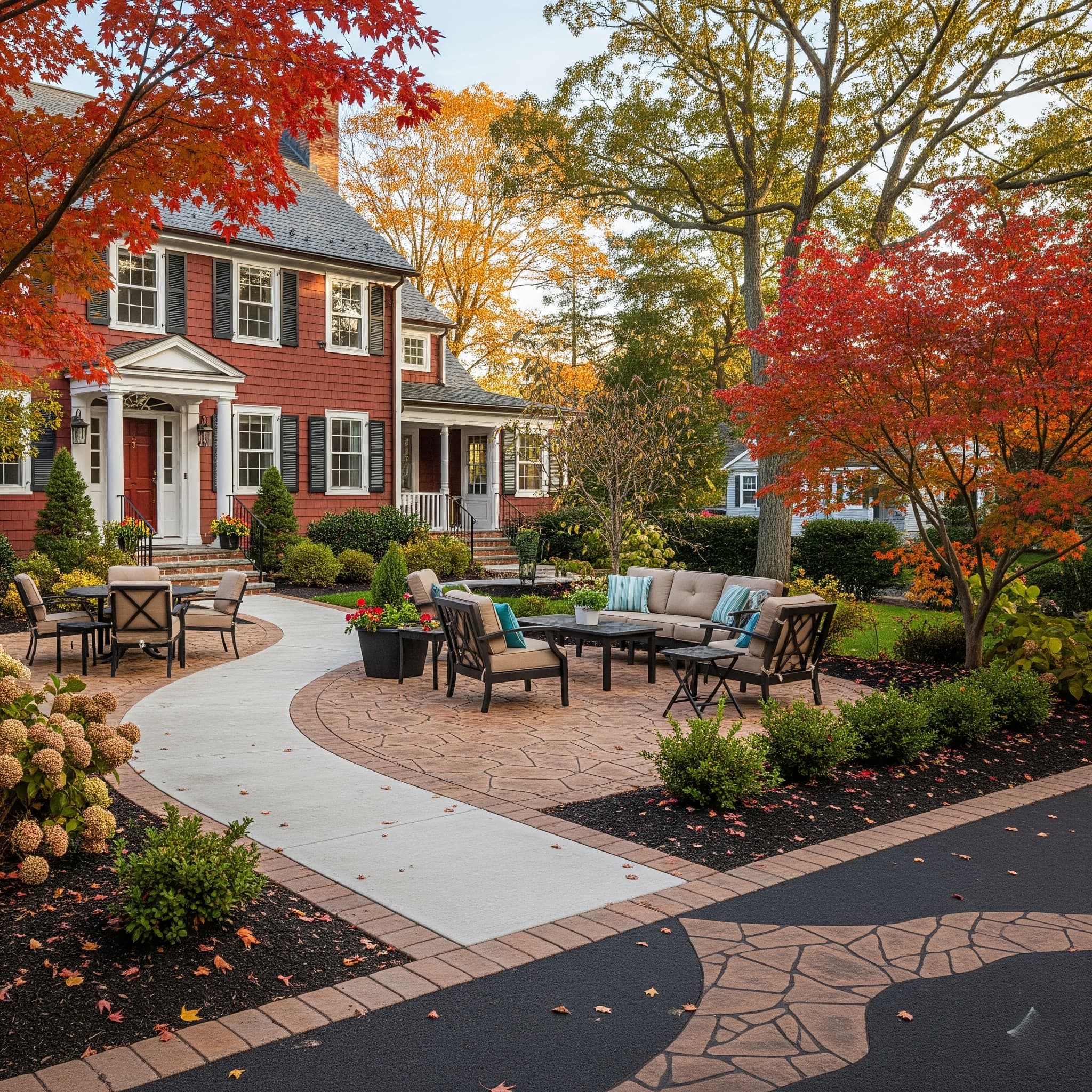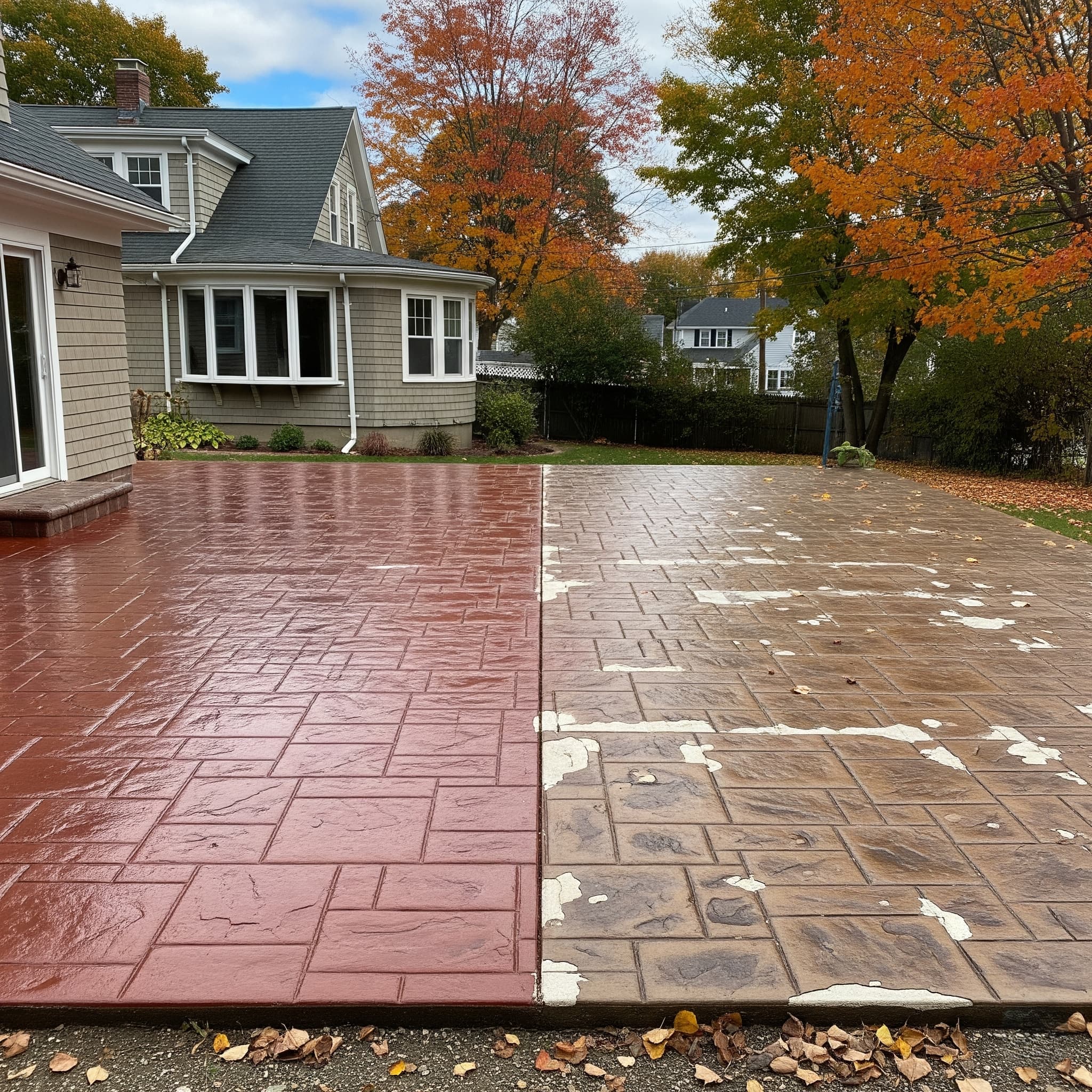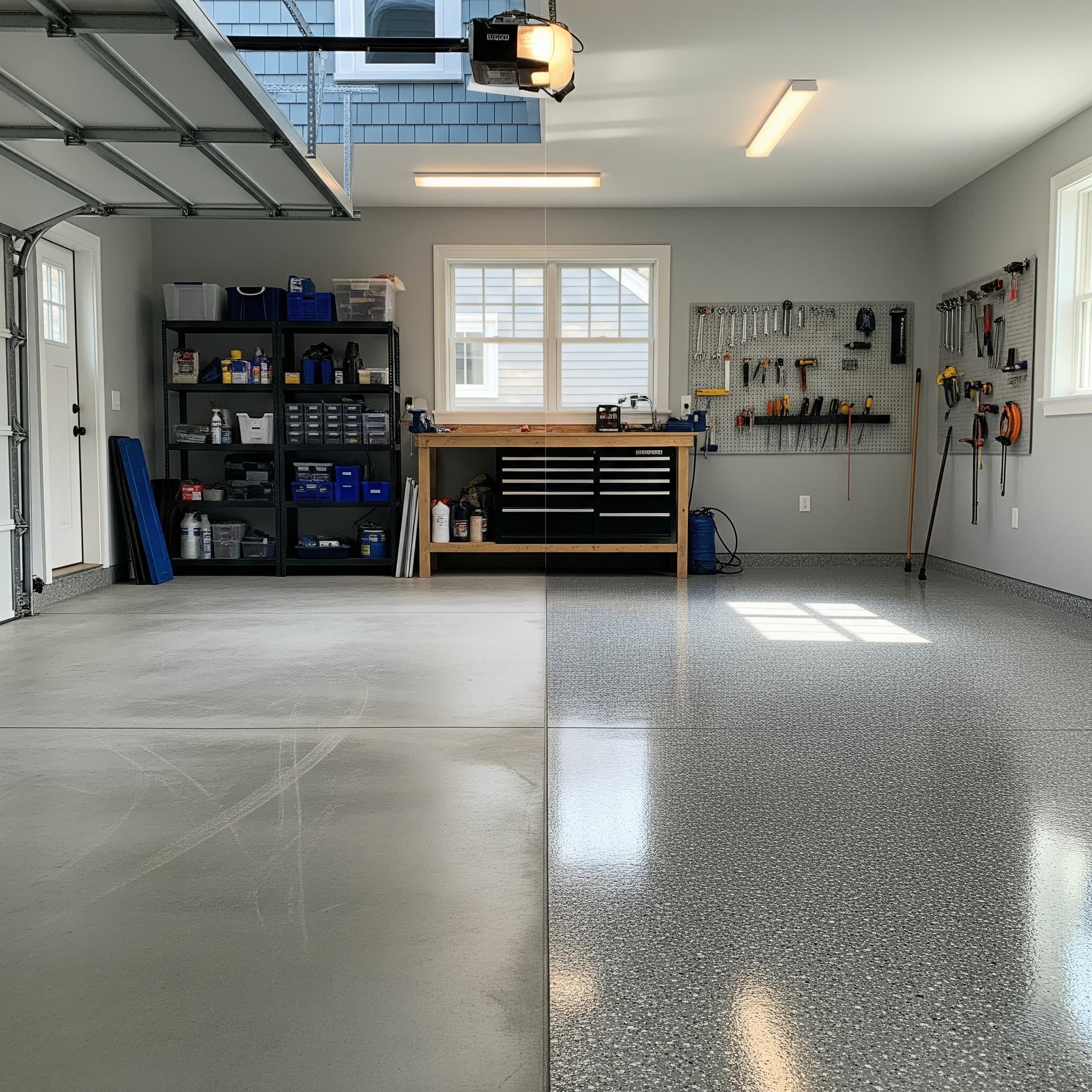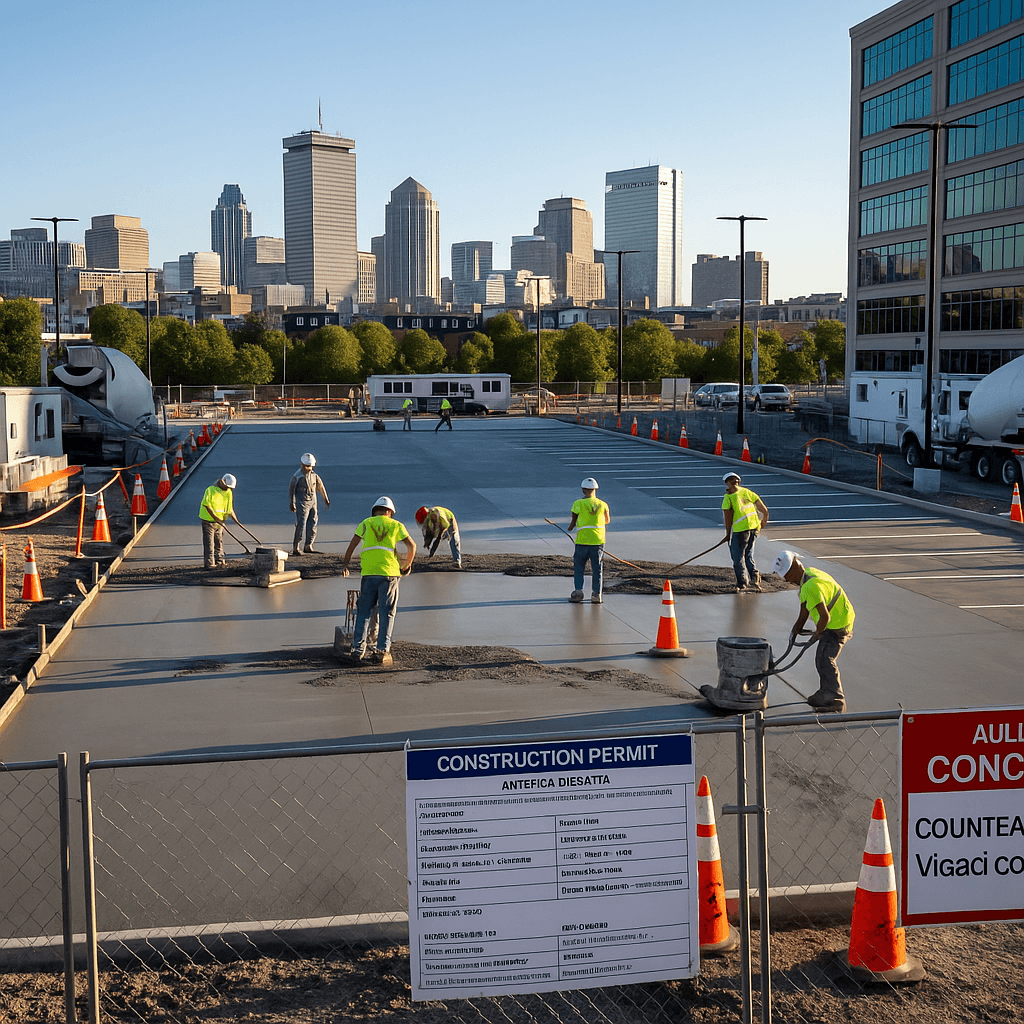
Stamped Concrete Mistakes to Avoid in Wet/New England Climates
Stamped Concrete Boston
New England’s challenging climate presents unique obstacles for stamped concrete installations throughout Greater Boston and surrounding areas. From Beacon Hill’s historic neighborhoods to suburban developments in Lexington, weather related mistakes can devastate decorative concrete investments. Understanding common pitfalls helps homeowners avoid costly repairs and premature replacement projects. Professional contractors recognize climate specific challenges and implement proven method to ensure long lasting, beautiful stamped concrete surfaces that withstand Massachusetts demanding seasonal conditions.
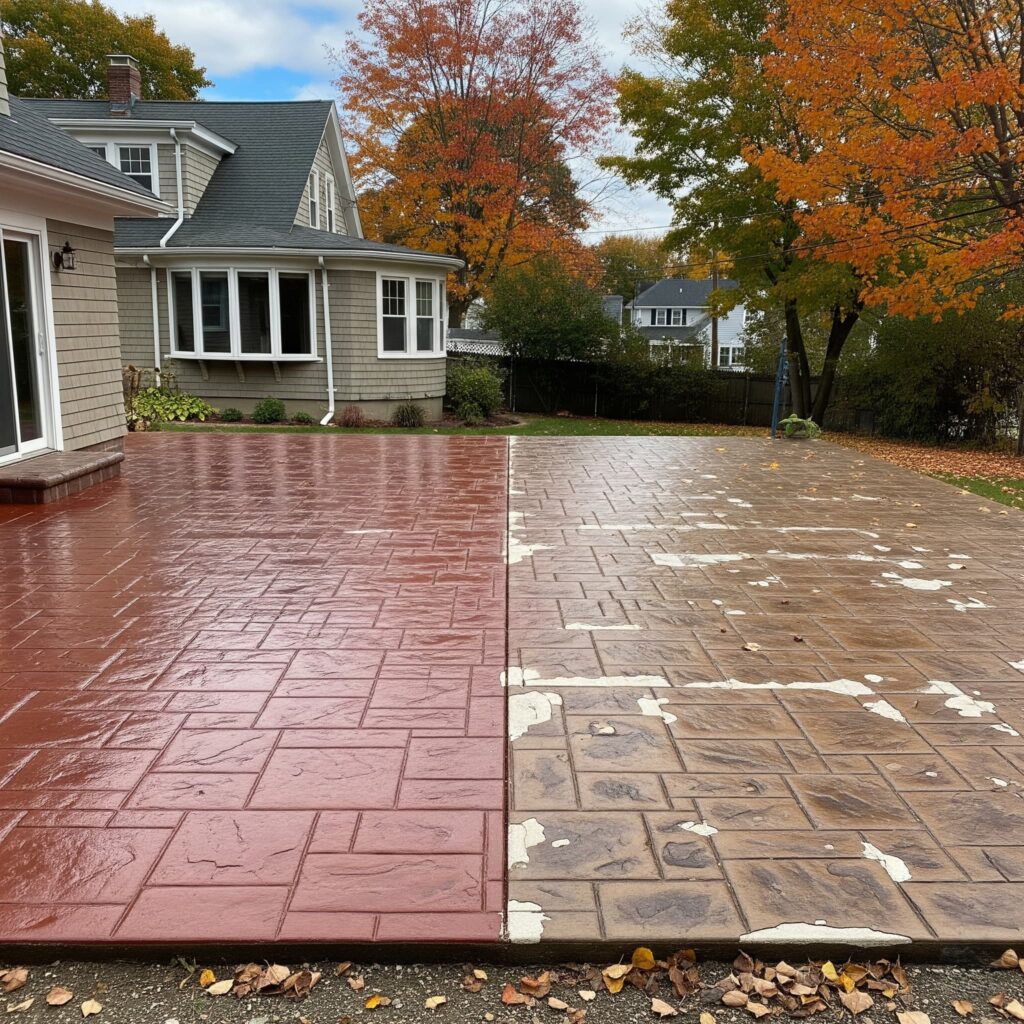
Weather Timing and Installation Mistakes
Rushing stamped concrete installations during inappropriate weather conditions represents the most common and costly mistake in New England projects. Massachusetts experiences unpredictable temperature swings very Strong Wetness in the air variations, and sudden weather changes that compromise concrete quality. Moreover contractors who ignore weather Predictions often face Severe failures requiring complete project demolition and replacement.
Temperature requirements for successful stamped concrete installation demand careful focus to local conditions. Concrete should never be poured when temperatures drop below 50 F or exceed 90 F during the crucial first 24 hours. Additionally, overnight temperature drops below freezing cause final strength loss up to 50% creating weak Failure prone surfaces throughout the installation.
Freeze-Thaw Cycle Preparation Failures
Massachusetts experiences 60 to 80 freeze thaw cycles annually, making proper concrete preparation important for long term power. Air entrained concrete with 5 to 7 percent air content provides key protection against expansion damage during the winter months. However contractors who skip this critical specification create surfaces vulnerable to spalling scaling and structural failure.
Premature sealing before proper curing completion traps moisture and Creates adhesion problems throughout the decorative surface. Professional installations require a minimum of 28 days of curing time before sealer application, regardless of look pressure from homeowners. In addition sealing during cold weather below 50F prevents proper sealer curing and creates long term maintenance nightmares
Inadequate Surface Preparation and Base Issues
Subgrade preparation failures cause the majority of long-term stamped concrete problems throughout Boston area installations. Excavation must reach firm, undisturbed soil at least 12 inches below grade to prevent settlement issues. Subsequently, dense graded aggregate base requires proper compaction in 4-inch lifts to 95 percent standard proctor density for stability.
Drainage considerations become critical in New England’s wet climate, where poor water management leads to base erosion and concrete failure. Proper slope design directs water away from structures while preventing pooling that undermines concrete integrity. Additionally inadequate Vapor barriers in below grade installations allow moisture migration that causes sealer adhesion problems and surface Decay
Soil and Environmental Factors
Boston’s varied soil conditions require skilled approaches for successful stamped concrete installations. Heavy soils expand and contract A lot with moisture changes, creating movement that cracks rigid concrete surfaces. Professional contractors perform soil analysis and out into action Suitable base modifications to accommodate local geological conditions.
The sea areas near Boston Harbor face additional challenges from salt Facing and higher humidity levels. Saltwater intrusion Speeds up concrete deterioration and requires specialized mix designs with Protective coating Extra materials. Moreover properties within five miles of the coast need enhanced Sealing schedules to protect against accelerated Wearing down and surface degradation
Improper Sealing and Maintenance Practices
Sealing mistakes represent the leading cause of premature stamped concrete failure in Massachusetts’ challenging climate. Applying the sealer too early Traps construction moisture and prevents proper adhesion leading to peeling, whitening, and Surface cracking issues. Conversely delaying sealer application allows moisture penetration that causes freeze thaw damage during the winter months
Sealer selection requires matching product specifications to local climate demands and expected surface use. Solvent-based acrylic sealers provide superior performance in New England conditions compared to water-based alternatives. However, application timing becomes critical, with temperatures requiring 50°F minimum for proper curing and film formation.
Resealing Schedule Neglect
Massachusetts’ extreme weather conditions accelerate sealer degradation, requiring reapplication every 3 to 5 years for optimal protection. Homeowners who ignore resealing schedules Experience rapid color fading, increased staining susceptibility and moisture intrusion problems. Firstly winter deicing chemicals strip protective sealers and require immediate spring reapplication for continued protection.
Maintenance mistakes include using harsh cleaning chemicals, metal snow removal tools, and inappropriate de icing products that damage stamped surfaces. Professional maintenance programs specify gentle cleaning methods plastic snow tools, and calcium chloride de icers that protect decorative concrete investments throughout challenging winter conditions.
Design and Pattern Selection Errors
Complex stamp patterns with deep textures trap moisture and debris, creating maintenance challenges in New England’s leaf-heavy autumn seasons. Intricate designs near areas like Arnold Arboretum or Franklin Park become difficult to clean and maintain properly. Therefore, selecting appropriate patterns that balance aesthetics with practical maintenance requirements prevents long-term frustration and expense.
Color selection mistakes include choosing dark colors that show salt staining and light colors that highlight every minor imperfection. Earth tones and medium shades provide optimal appearance retention in Boston’s challenging climate conditions. Furthermore, integral color additions provide better fade resistance compared to surface-applied color hardeners alone.
Contractor Selection and Quality Control Issues
Hiring inexperienced contractors unfamiliar with New England climate challenges leads to systematic installation failures and warranty problems. Professional contractors understand local building codes, seasonal limitations, and climate-specific techniques required for successful stamped concrete projects. Additionally licensed contractors provide proper insurance coverage and warranty protection for expensive decorative concrete investments.
Quality control during installation requires continuous monitoring of weather conditions, concrete temperature, and timing coordination. Rushing through critical steps to meet arbitrary deadlines compromises long-term performance and creates costly repair requirements. Moreover, proper tool selection and stamp release techniques prevent surface defects that become magnified over time.
Material Quality and Mix Design Mistakes
Using inferior concrete mixes or inappropriate admixtures creates weak surfaces that are unable to withstand Massachusetts’ demanding climate conditions. Professional installations specify a minimum 4,000 PSI concrete with proper air entrainment and water reducing admixtures. Subsequently, low-quality aggregate or excessive water content compromises durability and appearance retention over time.
Admixture compatibility becomes critical when combining color, accelerators, and air-entraining agents in single concrete batches. Incompatible chemical interactions can cause setting problems Color variations, and reduced performance characteristics. Therefore, experienced contractors test mix designs and coordinate with ready mix suppliers to ensure optimal results.
Long Term Protection Strategies
Successful stamped concrete installations require ongoing protection strategies that address New England’s specific climate challenges. Regular inspection schedules identify minor problems before they become expensive repairs requiring surface reconstruction. Additionally prompt crack repair using appropriate sealants prevents water intrusion that leads to freeze-thaw damage.
Seasonal maintenance programs include spring cleaning, summer sealing assessments, autumn debris removal, and winter protection measures. Professional maintenance contracts ensure appropriate care while protecting warranty coverage and long-term investment value. Furthermore, proper drainage maintenance prevents water accumulation that undermines concrete integrity over time.
Boston Concrete Works understands the unique challenges of installing and maintaining stamped concrete in New England’s demanding climate. Our experienced team implements proven strategies that prevent common mistakes while delivering beautiful, durable decorative concrete surfaces that enhance property values throughout the Greater Boston area for decades to come
LATEST POSTS

